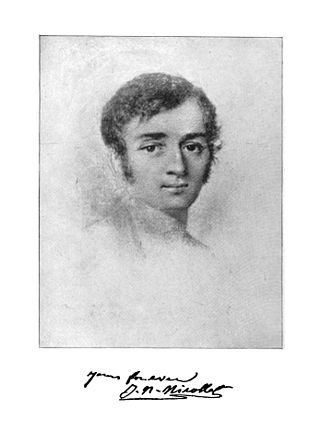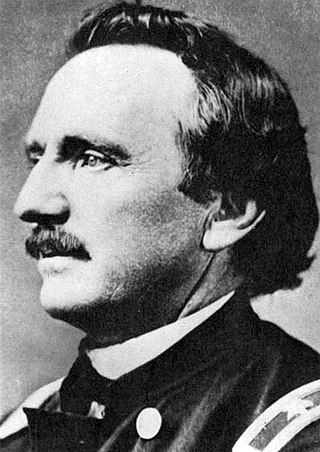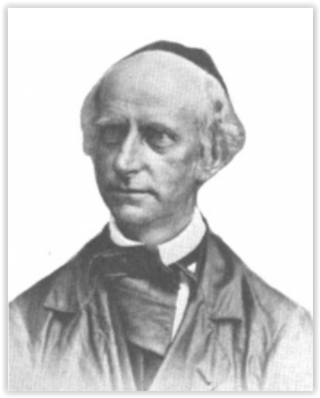
The Lewis and Clark Expedition, also known as the Corps of Discovery Expedition, was the United States expedition to cross the newly acquired western portion of the country after the Louisiana Purchase. The Corps of Discovery was a select group of U.S. Army and civilian volunteers under the command of Captain Meriwether Lewis and his close friend Second Lieutenant William Clark. Clark and 30 members set out from Camp Dubois, Illinois, on May 14, 1804, met Lewis and ten other members of the group in St. Charles, Missouri, then went up the Missouri River. The expedition crossed the Continental Divide of the Americas near the Lemhi Pass, eventually coming to the Columbia River, and the Pacific Ocean in 1805. The return voyage began on March 23, 1806, at Fort Clatsop, Oregon, and ended on September 23 of the same year.

Council Bluffs is a city in and the county seat of Pottawattamie County, Iowa, United States. It is the most populous city in Southwest Iowa, as well as the third largest and a primary city of the Omaha-Council Bluffs Metropolitan Area. It is located on the east bank of the Missouri River, across from Omaha, Nebraska. Until about 1853 Council Bluffs was known as Kanesville. Kanesville was the historic starting point of the Mormon Trail. Kanesville is also the northernmost anchor town of the other emigrant trails because there was a steam-powered boat which ferried the settlers' wagons and cattle across the Missouri River. In 1869, the first transcontinental railroad to California was connected to the existing U.S. rail network at Council Bluffs.

Pierre Gaultier de Varennes, sieur de La Vérendrye was a French Canadian military officer, fur trader, and explorer. In the 1730s, he and his four sons explored the area west of Lake Superior and established trading posts there. They were part of a process that added Western Canada to the original New France territory that was centred along the Saint Lawrence basin.

Joseph Nicolas Nicollet, also known as Jean-Nicolas Nicollet, was a French geographer, astronomer, and mathematician known for mapping the Upper Mississippi River basin during the 1830s. Nicollet led three expeditions in the region between the Mississippi and Missouri Rivers, primarily in Minnesota, South Dakota, and North Dakota.
Billy Caldwell, baptized Thomas Caldwell, known also as Sauganash, was a British-Potawatomi fur trader who was commissioned captain in the Indian Department of Canada during the War of 1812. He moved to the United States in 1818 and settled there. In 1829 and 1833, he negotiated treaties on behalf of the United Nations of Chippewa, Ottawa and Potawatomi with the United States, and became a leader of a Potawatomi band at Trader's Point. He worked to gain the boundary long promised by the British between white settlers and Indians, but never achieved it.

Fort Union Trading Post National Historic Site is a partial reconstruction of the most important fur trading post on the upper Missouri River from 1829 to 1867. The fort site is about two miles from the confluence of the Missouri River and its tributary, the Yellowstone River, on the Dakota side of the North Dakota/Montana border, 25 miles from Williston, North Dakota.

Hiram Martin Chittenden was an American engineer and historian. A graduate of West Point, he was the Seattle district engineer for the Army Corps of Engineers from 1906 to 1908). Chittenden was one of the first three elected Port Commissioners at the Port of Seattle. He also helped found the Pacific Coast Association of Port Authorities, later known as the Association of Pacific Ports in 1913. The Hiram M. Chittenden Locks in Seattle are named in his honor.
Fort Lisa (1812–1823) was established in 1812 in what is now North Omaha in Omaha, Nebraska by famed fur trader Manuel Lisa and the Missouri Fur Company, which was based in Saint Louis. The fort was associated with several firsts in Nebraska history: Lisa was the first European farmer in Nebraska; it was the first settlement by American citizens set up in the then-recent Louisiana Purchase; Lisa's wife was the first woman resident of European descent in Nebraska; and the first steamboat to navigate Nebraska waters, the Western Engineer, arrived at Fort Lisa in September 1819.

Pierre Chouteau Jr., also referred to as Pierre Cadet Chouteau, was an American merchant and a member of the wealthy Chouteau fur-trading family of Saint Louis, Missouri.
Karl (Charles) Andreas Geyer was a German botanist who was a native of Dresden.

Several Native American tribes hold or have held territory within the lands that are now the state of Iowa.

The Moingona or Moingwena were a historic Miami-Illinois tribe. They may have been close allies of or perhaps part of the Peoria. They were assimilated by that tribe and lost their separate identity about 1700. Today their descendants are enrolled in the Peoria Tribe of Indians of Oklahoma, a federally-recognized tribe.

Pierre-Jean De Smet, SJ, also known as Pieter-Jan De Smet, was a Flemish Catholic priest and member of the Society of Jesus (Jesuits). He is known primarily for his widespread missionary work in the mid-19th century among the Native American peoples, in the midwestern and northwestern United States and western Canada.

William Franklin Raynolds was an American explorer, engineer and U.S. army officer who served in the Mexican–American War and American Civil War. He is best known for leading the 1859–60 Raynolds Expedition while serving as a member of the U.S. Army Corps of Topographical Engineers.
Christiaan Jacob Adriaan Hoeken, SJ (1808–1851) was a Jesuit missionary of Dutch origin who worked in the United States among the first nations. He wrote several books in Potawatomi and founded St. Ignatius Mission among the Kalispel. Hoecken died of malaria sailing up the Missouri River.

Far West was a shallow draft sternwheel steamboat plying the upper Missouri and Yellowstone Rivers in the Dakota and Montana Territories, in the years from 1870 to 1883. By being involved in historic events in the Indian Wars of the western frontier, the Far West became an iconic symbol of the shallow draft steamboat plying the upper Missouri and Yellowstone Rivers in the era before railroads dominated transport in these areas.
This timeline of South Dakota is a list of events in the history of South Dakota by year.

Joseph Marie LaBarge was an American steamboat captain, most notably of the steamboats Yellowstone, and Emilie, that saw service on the Mississippi and Missouri rivers, bringing fur traders, miners, goods and supplies up and down these rivers to their destinations. During much of his career LaBarge was in the employ of the American Fur Company, a giant in the fur trading business, before building his own steamboat, the Emilie, to become an independent riverman. During his career he exceeded several existing speed and distance records for steamboats on the Missouri River. Passengers aboard his vessels sometimes included notable people, including Abraham Lincoln. LaBarge routinely offered his steamboat services gratis to Jesuit missionaries throughout his career.

The Spread Eagle was a steam-driven sidewheel riverboat that transported passengers, goods and supplies to the forts and trading posts along the Missouri River between 1857–1864. It was constructed and launched at Brownsville, Pennsylvania. The vessel was a wooden hull packet, 210 feet (64 m) long, with a beam of 36 feet (11 m), a draft of 6 feet (1.8 m), and was rated at 389 tons. It was powered by two steam engines with 3 boilers each, at 40 inches (1,000 mm) in diameter and 24 feet (7.3 m) in length. The Spread Eagle was constructed by Captain Benjamin Johnson who sold the vessel to the American Fur Company upon her arrival at Saint Louis, Missouri. Commanded by captain Bailey, she was once engaged in a race along the Missouri from St. Louis to Fort Benton where she rammed her opponent.

Adrianus Hoecken, SJ was a Jesuit missionary of Dutch origin who worked among different Native American tribes in the United States. He was a younger brother of fellow Jesuit Christian Hoecken and one of the first travel companions of fellow Jesuit Pierre-Jean De Smet.













